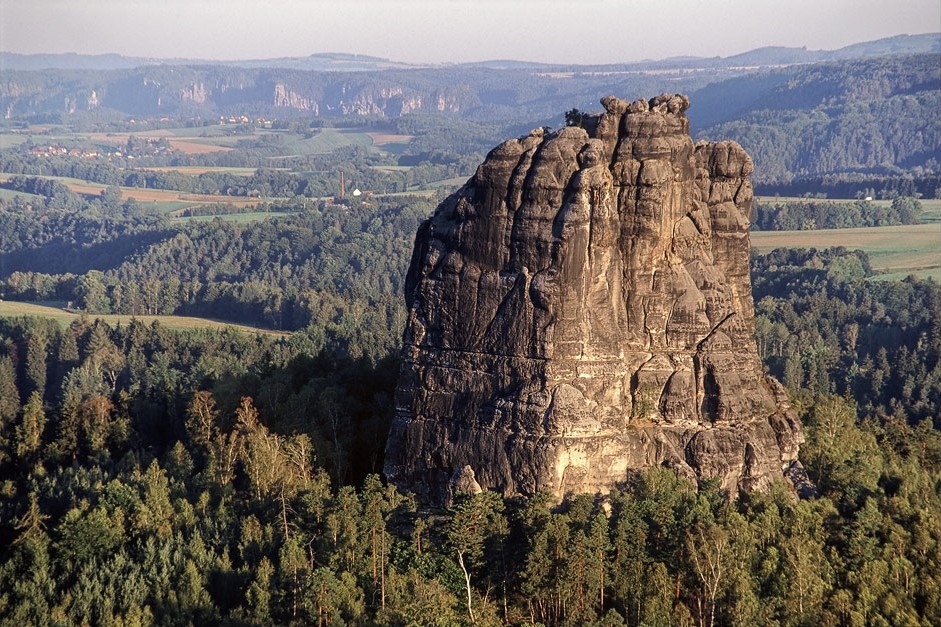The Complete History of Rock Climbing
|
|
Hey everyone, |
|
|
You misspelled Yvon Chouinard's name. I would also define "free solo" early on, as someone reading this article may not know what it is. Also, you may want to go over the difference between trad climbing and sport climbing in "Traditional and Sport Climbing" section. |
|
|
Very difficult to cover all aspect or countries when writing a history, particularly in a summarized form. |
|
|
....will never be written |
|
|
“Bits and pieces here and there with random stories” about sums it up. |
|
|
The section on protection techniques is very US-centric (not Hex-centric - sorry) you should mention knot jamming (Saxony) and the British use of pebbles (chocks) inserted into cracks and threaded with a loop, subsequent machine nuts as precursors to modern passive protection, plus perhaps as the source for the popular names of these items (nuts, chocks, runners etc.). |
|
|
Perhaps a change in title from "complete" to "brief" might be in order. |
|
|
Quick search and no mention of 8a.nu/Jens. |
|
|
Hasn't free climbing been a thing in slavic countries way before western countries? I remember seeing something about climbs in the Czech area free climbing barefoot in the early 1900s... |
|
|
Rob Dillon wrote: “Bits and pieces here and there with random stories” about sums it up. You can add "written by an American". |
|
|
No offense meant, but your whole site reads like someone who hasn't been climbing very long, but is pretty excited about climbing. |
|
|
Walter Parry Haskett Smith spent some time in the Lake District in England, and free soloed the first ascent of the Napes Needle in 1886. This climb has been known as the birth of rock climbing as its own sport, as it started to draw attention to his, and other’s climbing solo attempts.Not correct. In 1848(!) Sebastian Abratzky (sorry, it is in german) climbed the rockwall of a castle in saxony, because he didn't want to pay the entry fee to the castle (there was some festival happening). This was done entirely free and drew some media attention. 1864, a group of gymnasts climbed the Falkenstein (approx. 90m high) for recreational reasons, although they did use aid climbing techniques. Falkenstein: 1874, the first purely athletically motivated and fully free ascent of a tower in the saxon swiss was made, and people have been free climbing in the saxon swiss since that time. This all happened before your "birth of rock climbing", although i do not know whether people have been free climbing even earlier in other parts of the world. |
|
|
|
|
|
saxonguy wrote: Not correct. Not to start a debate but Hasket-Smith's climb of Napes Needle, even though it wasn't the first climb (even in Britain) is recognized there as the traditional first one to satisfy the requirements of doing a rock climb just for the modern reasons of doing a rock climb - because it's there basically. |
|
|
Jake, you really need to work on your site if you expect to be a definitive resource and use such absolute titles. (Lots of history not even mentioned) To achieve what you are trying to do, it would be an impossible solo project. Therefore, reach out to historians in our tribe. They will help you. |
|
|
Chris Owen wrote: That is very well, but over here in saxony the ascent of the Falkenstein in 1864 is considered the "first one to satisfy the requirements of doing a rock climb just for the modern reasons of doing a rock climb - because it's there basically" whereas i had never heard of Hasket-Smith before in my live. And as i said, i don't know whether this was the first such ascent, there may have been earlier ones i don't know about, but (not to start a debate) it happened 22 years before Hasket-Smith's climb. |
|
|
I was introduced to climbing in 1957 by a guy who had learned in Yosemite as a membeer of the Stanford Alpine Club. At that time the YDS had not yet progressed to decimals. Fifth class was "easy", "moderate'." or "hard". The decimals came along shortly, say early 1960s, but went to 5.9, at which point you entered the sixth class. In a bit climbers realized that there were moves beyond 5.9 and 5.10 came along, It is marvelous how technical proficiency has progressed over time. Those o us rom that era were literally climbing in the Stone Age. |
|
|
Well yeah, the stupid French were bouldering in Font in the early 1870's but they don't speak English so don't count. And boudering isn't real climbing even now. |
|
|
You should look up the history of Dolomites climbing and its first ascents. E.g. Paul Grohman did Langkofel in 1869 en.wikipedia.org/wiki/Langk…, which I would still consider as a challenging climb. And Grohmann did more of this stuff. |
|
|
Hello, |
|
|
As someone said, change the title. Just like a congressional bill, one read of the title and you know that whatever it is, you know it’s not that.... |

 Continue with onX Maps
Continue with onX Maps Sign in with Facebook
Sign in with Facebook

























